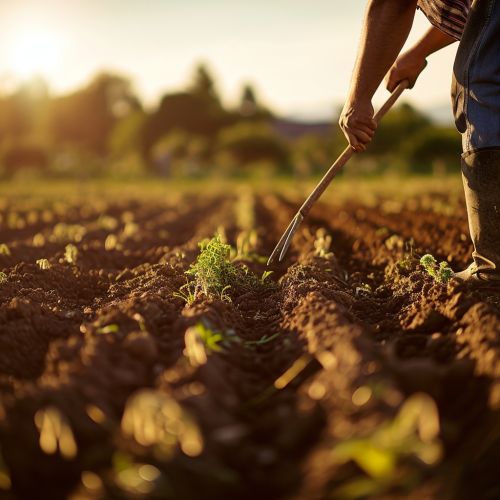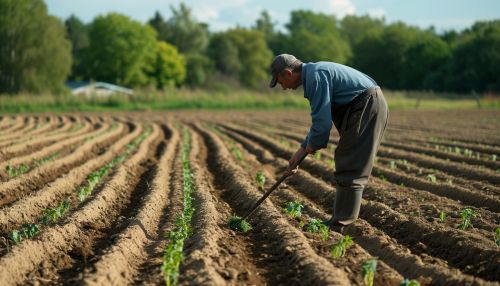Weed Management
Introduction
Weed management is a critical aspect of plant agriculture and landscape maintenance. It involves the use of various methods and techniques to control the growth and spread of weeds or unwanted plants. The goal of weed management is to minimize the impact of weeds on the growth and yield of crops, as well as to maintain the aesthetic appeal of landscapes.


Understanding Weeds
Weeds are plants that grow where they are not wanted. They are typically characterized by their ability to thrive in disturbed environments and their capacity to reproduce rapidly. Weeds can have a significant impact on crop production by competing with crops for resources such as light, water, and nutrients. They can also host pests and diseases that can harm crops. Understanding the biology and ecology of weeds is essential for effective weed management.
Types of Weeds
Weeds can be classified into several types based on their life cycle. These include annuals, biennials, and perennials.
- Annuals are plants that complete their life cycle in one year or less. They germinate, grow, flower, produce seeds, and die within a single growing season. Examples of annual weeds include crabgrass and pigweed.
- Biennials are plants that complete their life cycle in two years. They typically germinate and grow vegetatively in their first year, then flower, produce seeds, and die in their second year. Examples of biennial weeds include burdock and wild carrot.
- Perennials are plants that live for more than two years. They can reproduce by seeds and also by vegetative structures such as rhizomes, tubers, and stolons. Examples of perennial weeds include dandelion and quackgrass.
Weed Management Strategies
Weed management strategies can be broadly classified into four categories: preventive, cultural, mechanical, and chemical. These strategies can be used individually or in combination to achieve effective weed control.
Preventive Weed Management
Preventive weed management involves practices that prevent the introduction and establishment of weeds. These practices include the use of weed-free seeds and planting materials, proper sanitation of equipment and tools, and the implementation of quarantine measures to prevent the spread of weed seeds.
Cultural Weed Management
Cultural weed management involves the manipulation of the crop environment to make it less favorable for weed growth and more favorable for the growth of the crop. These practices include crop rotation, cover cropping, proper fertilization, and irrigation practices.
Mechanical Weed Management
Mechanical weed management involves the use of physical methods to control weeds. These methods include hand weeding, hoeing, mowing, and tillage. Mechanical weed control can be labor-intensive and may not be suitable for large-scale operations.
Chemical Weed Management
Chemical weed management involves the use of herbicides to control weeds. Herbicides can be selective (affecting specific types of plants) or non-selective (affecting all types of plants). They can also be contact (affecting only the parts of the plant they touch) or systemic (translocated throughout the plant).
Integrated Weed Management
Integrated weed management (IWM) is a holistic approach to weed control that combines different weed management strategies to achieve effective and sustainable weed control. IWM is based on the understanding of the biology and ecology of weeds and the use of appropriate weed management strategies at the right time. It aims to minimize the use of herbicides and reduce the impact of weed management practices on the environment.
Challenges in Weed Management
Despite advances in weed management, several challenges remain. These include the development of herbicide resistance in weeds, the impact of weed management practices on the environment, and the need for more research and development in weed management.
Conclusion
Weed management is a critical aspect of plant agriculture and landscape maintenance. It involves the use of various methods and techniques to control the growth and spread of weeds. Despite the challenges, effective weed management can contribute to increased crop productivity and the maintenance of aesthetic landscapes.
